Este post também está disponível em:
Português
English
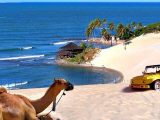
The North Coast of RN has strong winds, sun, dunes, beaches, cliffs and the potiguar friendliness accompany visitors all along the coast.
Many tourists who come to Rio Grande do Norte know the northern stretch of the coast from Natal.
Here, I invite you to immerse yourself in more time for contemplation and fewer transfers.
Until Galinhos, we see a more national tourism, the last two cities of the itinerary – Macau and Areia Branca – are still aimed at the potiguar and cearense audiences, but you will not regret setting foot there.
Videos about São Miguel do Gostoso, Dunas de Genipabu, Maracajaú, Maxaranguape and Porto de Galinas.
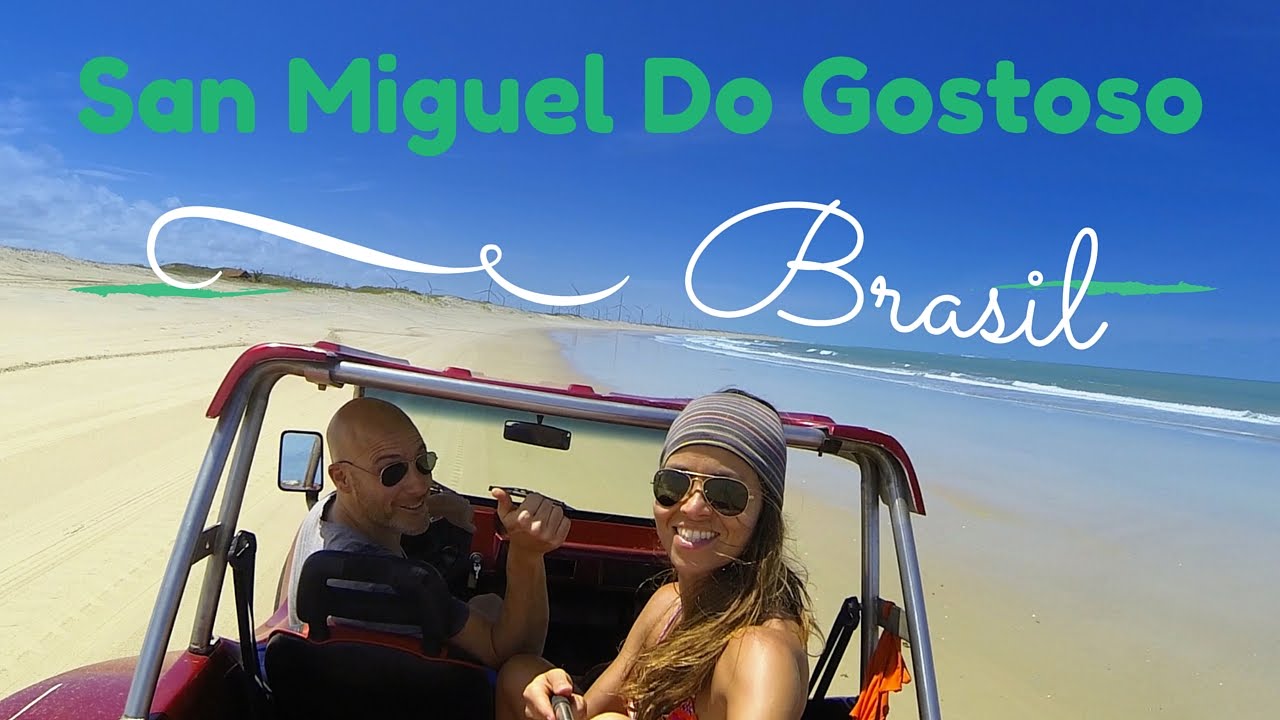

São Miguel do Gostoso - Drone
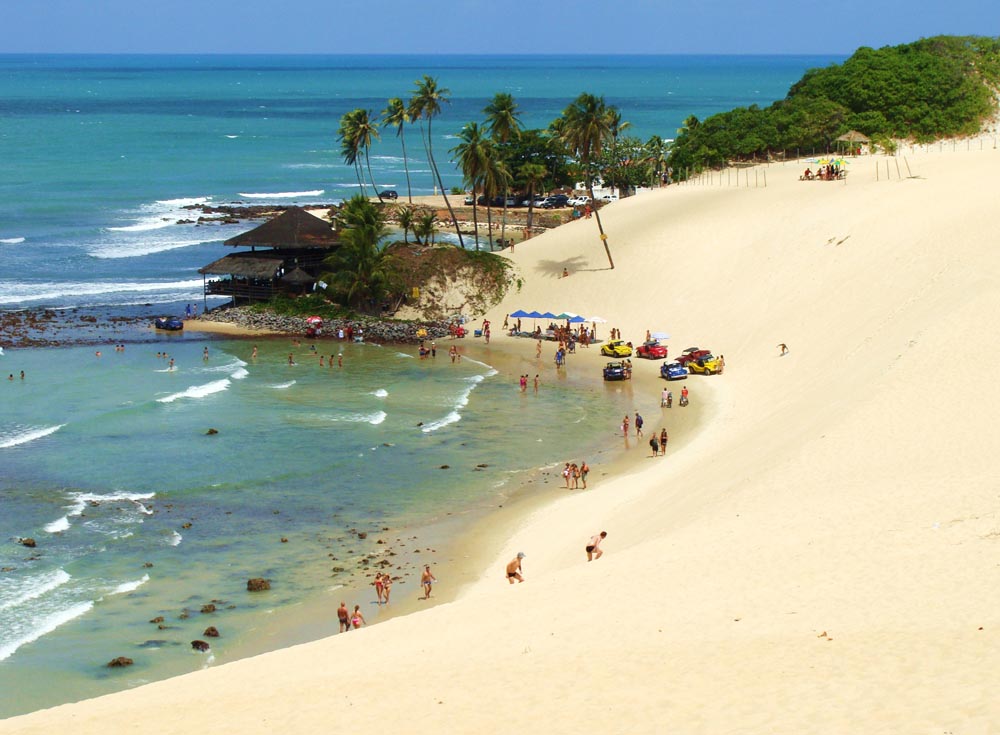
Dunas de Genipabu
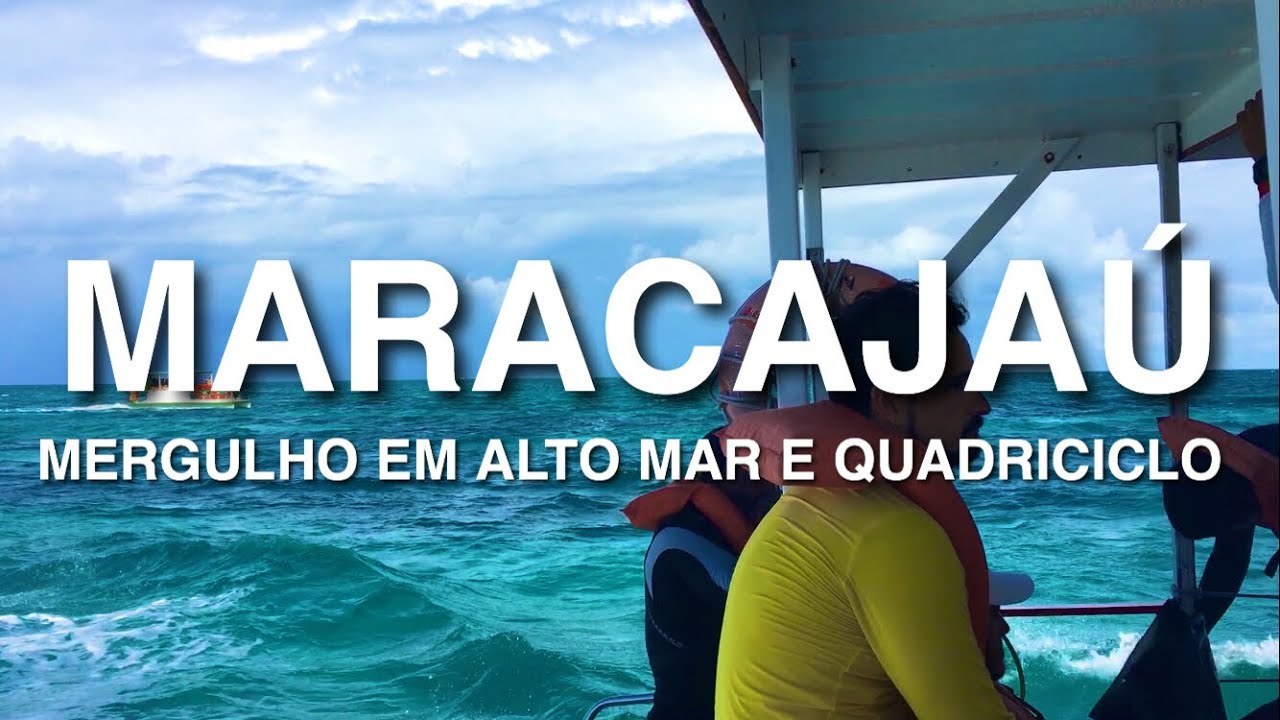
Maracajau e Maxaranguape - Drone
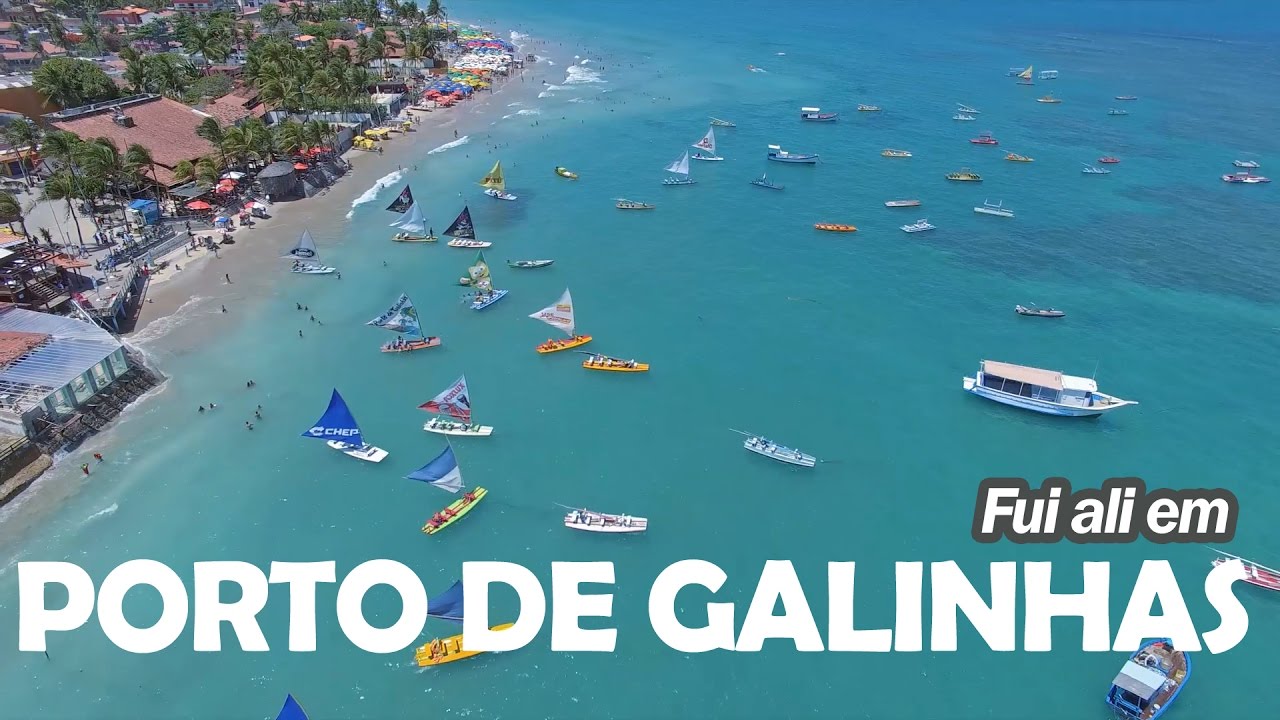
Porto de Galinhas - Drone
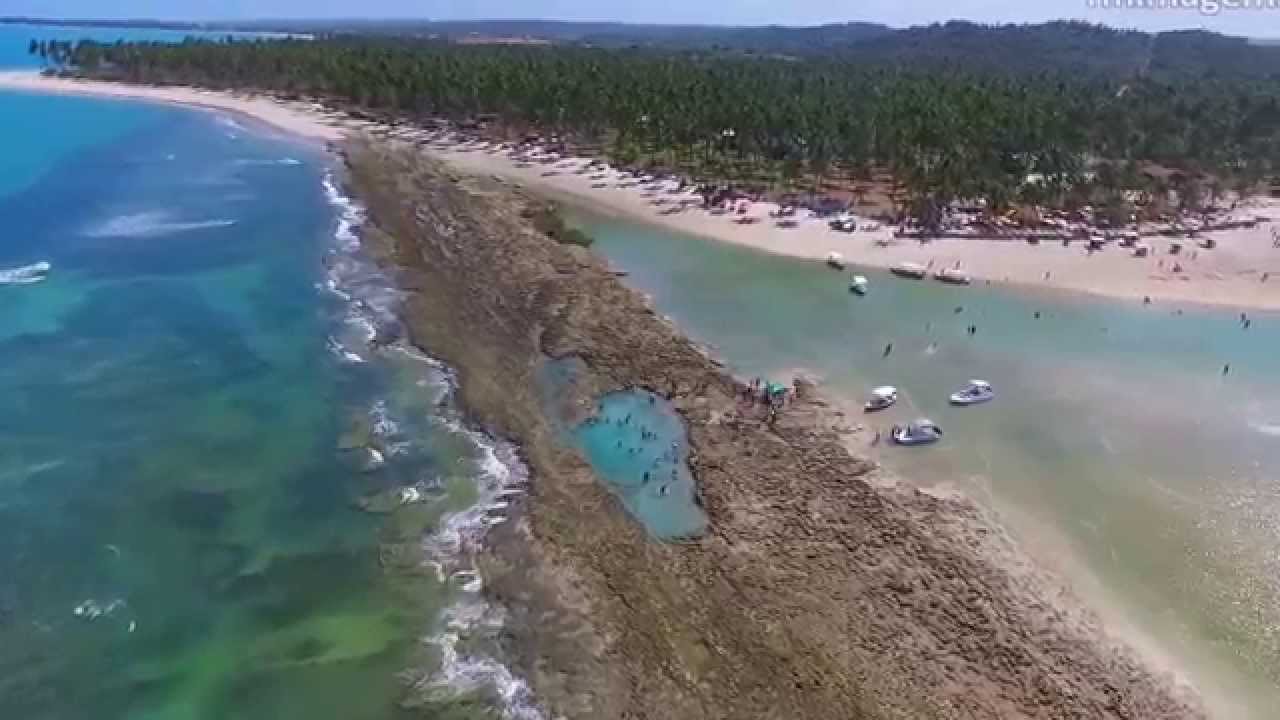
Porto de Galinhas - Drone
Tourist itinerary through the North Coast of RN
Days 1 – Genipabu
The classic visit to Genipabu consists of a buggy ride that lasts all day and passes through the dunes and beach of Genipabu, Pitangui and Jacumã lagoons and a meagre waterfall.
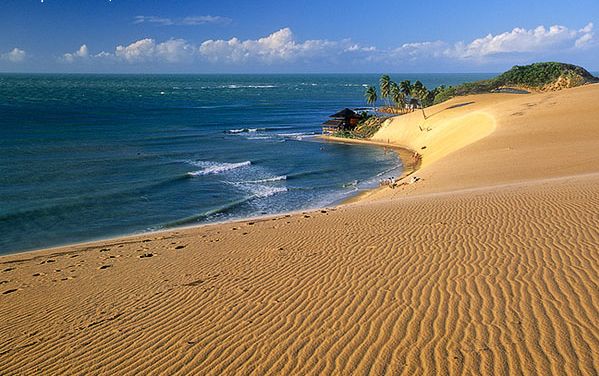
There’s so much that you come back to the hotel shattered. It feels more like a city tour than an excursion. How about splitting the journey into two days with more time for fun and contemplation?
We start with the region’s most famous attraction: the buggy ride through the Genipabu Dunes Park. Here the action of the winds changes the fine sandbanks constantly, so the dunes are mobile.
As soon as you leave the tarmac and enter the sand, passing by the Genipabu Lagoon, the buggy driver asks the classic question: “So, guys, with or without emotion”?
Those who answer negatively will just stroll along the crest of the dunes in a very quiet ride. Now, those who decide to face it with an open chest will be chilled by the manoeuvres of the buggy driver.
The descent is fast, almost always followed by a turn in the buggy.
Almost arriving at the beach, it seems that we are in the Sahara.
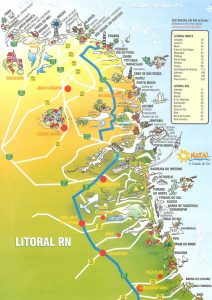
Dromedaries occupy the top of the dune. Sitting on supports on the side of the animals, you can walk along a path for 15 minutes – you do not need to take the buggy ride to reach the dromedaries, just climb the dune at the end of Genipabu beach.
Lunch at Bar 21 is one of the almost obligatory programmes. Located at the foot of the dune, the wooden building is part of most of the panoramic photos. In addition, it prepares competent recipes with fish and prawns.
Leave the afternoon to enjoy a swim in the urbanised Genipabu waterfront.
Day 2
With the proposed division, the second day is much less busy.
Hiring a buggy tour is the best option, but you can do it with your own car. For those in buggies, the tour begins with a rowing ferry crossing the Ceará-Mirim River to Graçandu Beach, which, by the way, is quite dull. If you’re travelling by car, you’ll have to take an 11 km diversions to the waterfront.
First stop: Lagoa de Pitangui. At the foot of a dune and partially surrounded by plastic chairs and kiosks, it is the perfect place to relax. Kayaks are available for a spin around the lagoon.
The road between Pitangui and Jacumã crosses a chain of dunes, the impression of being in the Sahara hits hard again.
Well, you should know that in fiction this place was once the famous African desert: sequences from the global soap opera O Clone were filmed here.
Unlike the relaxing Lagoa de Pitangui, Lagoa de Jacumã is the scene of great adventures. You may have heard of the esquibunda and the aerobunda. Well, this is the address.
In the esquibunda, you go down the dune on a wooden plank and end up in the waters of the lagoon; the aerobunda is a simple zip line.
There is also the ultra-fast kamizaze, where you descend on a bodyboard.

To close the day, it’s time for a swim at Muriú Beach, with natural pools 1 km from the coast – boats take you there.
Book your accommodation in Genipabu by Booking
Day 3 – Maracajaú
One of the most popular destinations for day trips from Natal, Maracajaú owes part of its fame to the parrachos (set of reefs) that form 7 km from the coast.
Boats, motorboats and catamarans are always ready at the ideal time of the tide to take tourists there.
Snorkelling with the little fish makes for great photographs.
However, unlike Maragogi and Porto de Galinhas, the natural pools of Maracajaú have an average depth of 1.5 metres, which is not recommended for children and those who cannot swim.
This would be a problem if the beach did not have other attributes. Framed by dunes and coconut palms, the strip of sand provides shade and restaurants hidden among the trees.
The Manoa water park has pools and waterslides for the whole family.
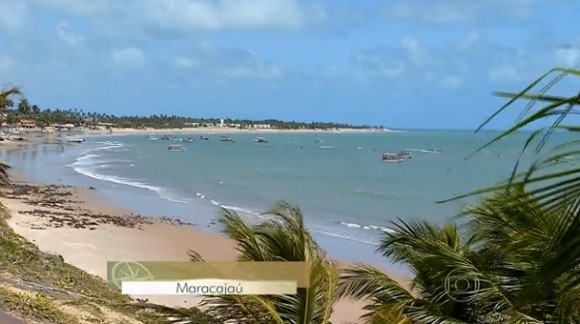
Just 12 kilometres away on a tarmac road, Maxaranguape is the seat of the municipality and its beach is home to the curious Tree of Love – two gameleiras that have intertwined. There is also Cape St Roque, the closest point to the African continent.
Day 4 – Touros
The city has a fundamental importance in the Brazilian map. Called the Elbow of Brazil, it is exactly here that our coastline stops being north/south and becomes east/west.
As a backdrop to this curve is the alvinegro Farol do Calcanhar, one of the largest in the world with 62 m high and 295 internal steps – unfortunately, it is closed to visitors.
Nearby, a sign indicates the start of the BR-101, a motorway that only ends 4650 km away in the other Rio Grande, the one in the south.
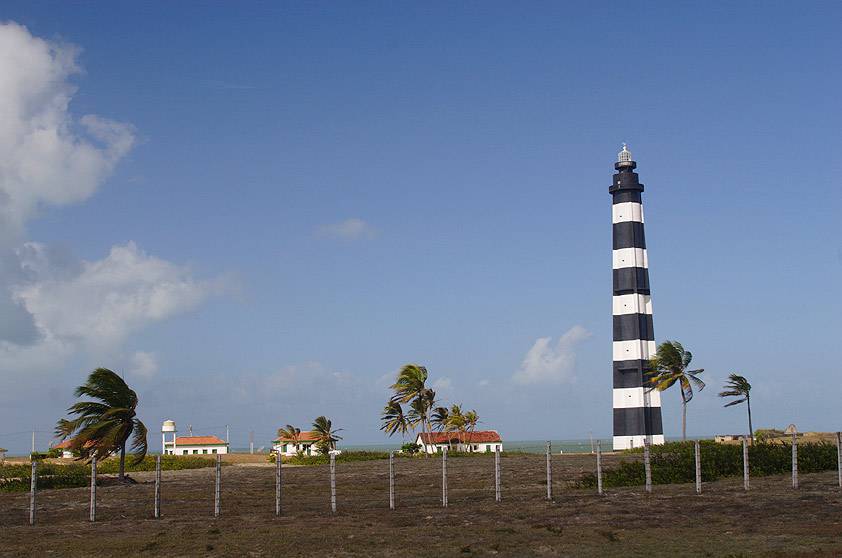
The central Mayan beach of Touros has coconut palms and a good restaurant infrastructure, but the strong sea scares away those who do not swim very well.
In this case, the best place to sunbathe is at Praia de Perobas, 11 km away, half on a dirt road.
You just have to be careful with the intense traffic of buggies on the sand, but the water has crystal clear colours.
As in Maracajaú, the highlight are the parrachos, which are 5 km from the coast and guarantee moments of great fun.
Book your accommodation in Touros on Booking
Days 5 and 6 – São Miguel do Gostoso
Until 1993, the place was a district of Touros and was called São Miguel de Touros.
With emancipation, someone had the happy idea of uniting São Miguel Arcanjo, the patron saint, with a folkloric local resident whose surname was Gostoso.
They held a plebiscite and with the approval of almost 100% of the residents, in 2000, the name was changed to São Miguel do Gostoso. A very nice place, no doubt.
Tourism there has been boosted in the last ten years with the discovery of kitesurfers and windsurfers from all over the world who seek the strong winds of its beaches, throughout the second half of the year. Currently, it is second only to Natal and Pipa in number of visitors.
It is worth booking two days to enjoy Gostoso. Not that it has many attractions, but because after so many dunes and parrachos, the body asks for a truce. And the city fits like a glove.
We left the first day to relax on the beaches.
Once semi-deserted, Ponta do Santo Cristo is the busiest and the favourite of kitesurfers. With a thin and generous strip of sand, the sea with moderate waves has a very blue colour.
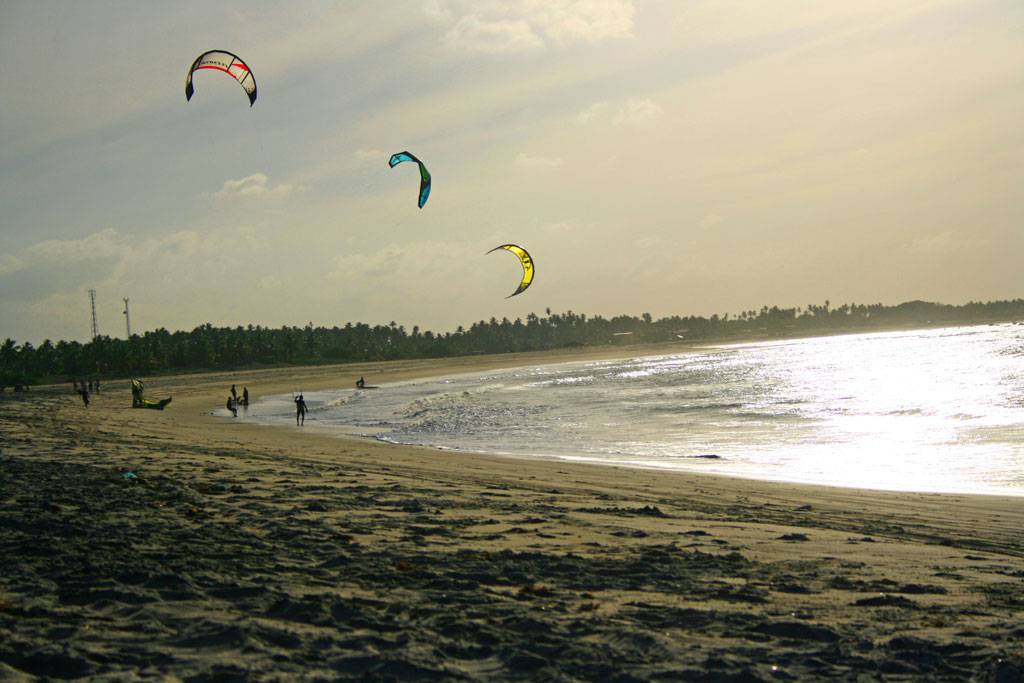
More centrally located, the trio of Cardeiro, Xêpa and Maceió are not among the most beautiful beaches, but they have kiosks, inns, a wide strip of sand and a friendlier sea.
At night, the programme is to walk along Avenida dos Arrecifes, full of bars and restaurants. And, of course, take the opportunity to chat with the locals, who, living up to the name of the city, carry a reputation for total friendliness.
The second day has Tourinhos Beach as the icing on the cake.
Not very busy, its scenery is composed of dunes petrified 2500 years ago and the “sigh of the whale”, a crack, which during high tide, spouts a jet of water. Apart from that, its gentle waves are an invitation to a pleasant swim.

To get there you need to drive 8 kilometres on a dirt road in good condition, three of them on a side road that leaves the village of Reduto.
Another option is to take a buggy ride that extends to Praia do Marco (where the oldest monument in the country was built, which is now located in the Forte dos Reis Magos, in Natal) and Galinhos (read below).
Days 7 and 8 – Galinhos and Galos
If there is a place that deserves to be called “little place” this is the duo Galinhos and Galos.
Located at the tip of a peninsula protected by huge dunes, mangroves and rivers, you can only get there by motorised buggy or 4×4 and at low tide.
Those who come with a normal car should leave the car at Pratagil Car Park (rest assured that the GPS shows how to get there) and cross 10 minutes by boat to Galinhos.
Before I start talking about the place, it is worth saying that many people do a crazy round trip from Natal, which is 160 km away. They leave at 7am and return at night.
I can tell you that you miss a spectacular sunset. But as you have more time, you can dedicate two days of the trip without error.
Galinhos has just over 1000 inhabitants. From the river pier to the beach is about 1 km that can be done on foot with the inclement sun beating down or aboard a carriage-taxi, crossing the entire village.
The rough sea can be a bit scary, but just put your foot in the water and feel the warm temperature to encourage you to stay at least in the shallows.
At the tip of the peninsula, an hour’s walk will take you to the isolated Galinhos Lighthouse, a great place to enjoy your first sunset.

Even smaller than Galinhos, the village of Galos can be reached on foot (an hour and a half walk) or by carriage-taxi. Or for those coming straight here by boat, via the Pratagil car park.
Once you have stayed overnight in the region, the day can be more intense.
Rio Grande do Norte is by far the largest producer of salt in the country and here the salt pans begin to appear. To get to know them, it’s worth taking a boat trip that also passes by the giant Duna do Capim, a mangrove swamp full of birds and a crab lunch on a beach without any tourists.
To close the day, next to the village of Galos, the Duna do André guarantees a beautiful panorama with the river and the sea in the field of vision. Another spectacular sunset for your collection.
Tourist Route along the north coast of RN – Genipabu, Gostoso and Touros
Tourism and Travel Guide for the North Coast of RN



















